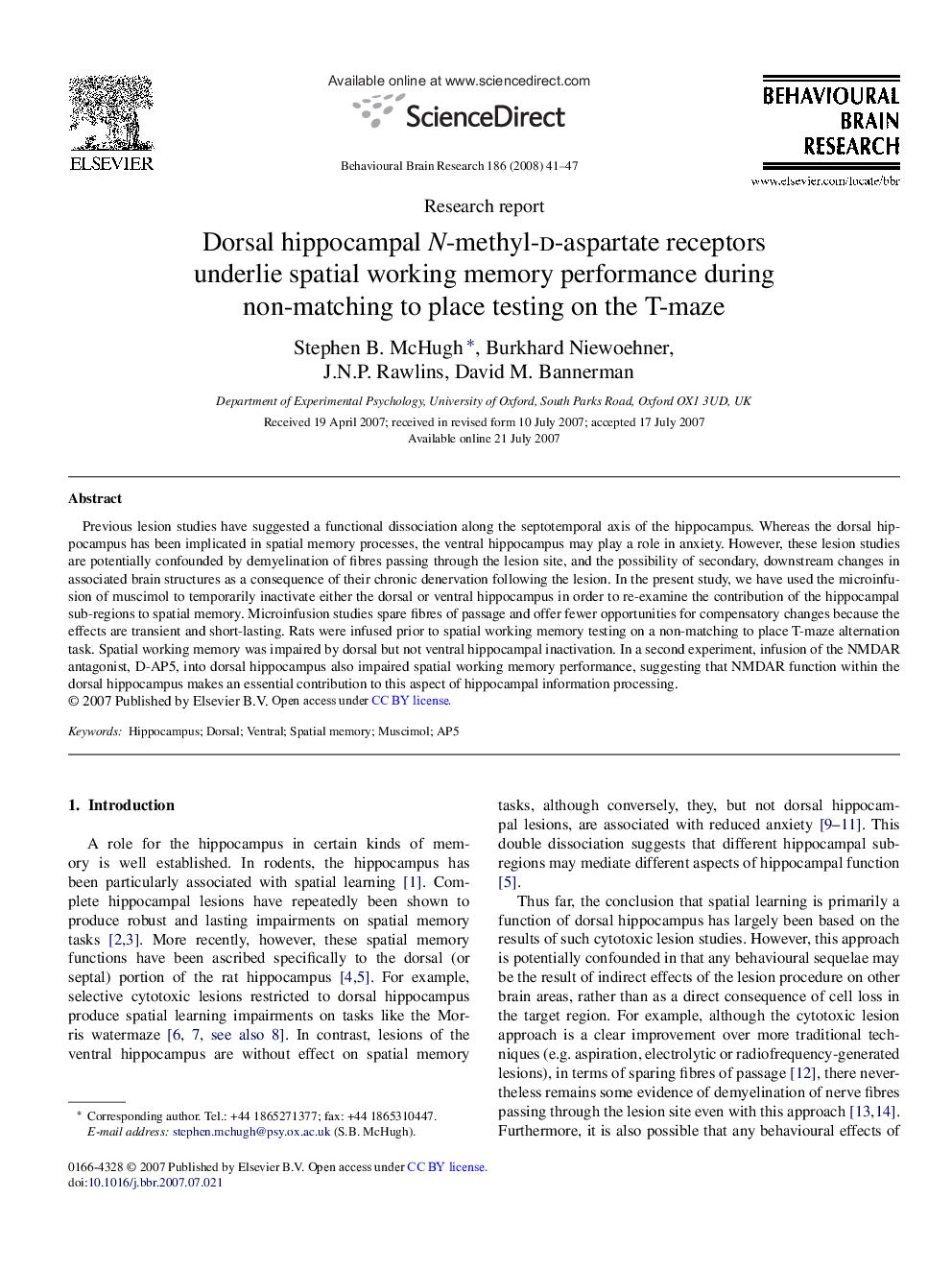| Article ID | Journal | Published Year | Pages | File Type |
|---|---|---|---|---|
| 6260255 | Behavioural Brain Research | 2008 | 7 Pages |
Previous lesion studies have suggested a functional dissociation along the septotemporal axis of the hippocampus. Whereas the dorsal hippocampus has been implicated in spatial memory processes, the ventral hippocampus may play a role in anxiety. However, these lesion studies are potentially confounded by demyelination of fibres passing through the lesion site, and the possibility of secondary, downstream changes in associated brain structures as a consequence of their chronic denervation following the lesion. In the present study, we have used the microinfusion of muscimol to temporarily inactivate either the dorsal or ventral hippocampus in order to re-examine the contribution of the hippocampal sub-regions to spatial memory. Microinfusion studies spare fibres of passage and offer fewer opportunities for compensatory changes because the effects are transient and short-lasting. Rats were infused prior to spatial working memory testing on a non-matching to place T-maze alternation task. Spatial working memory was impaired by dorsal but not ventral hippocampal inactivation. In a second experiment, infusion of the NMDAR antagonist, D-AP5, into dorsal hippocampus also impaired spatial working memory performance, suggesting that NMDAR function within the dorsal hippocampus makes an essential contribution to this aspect of hippocampal information processing.
